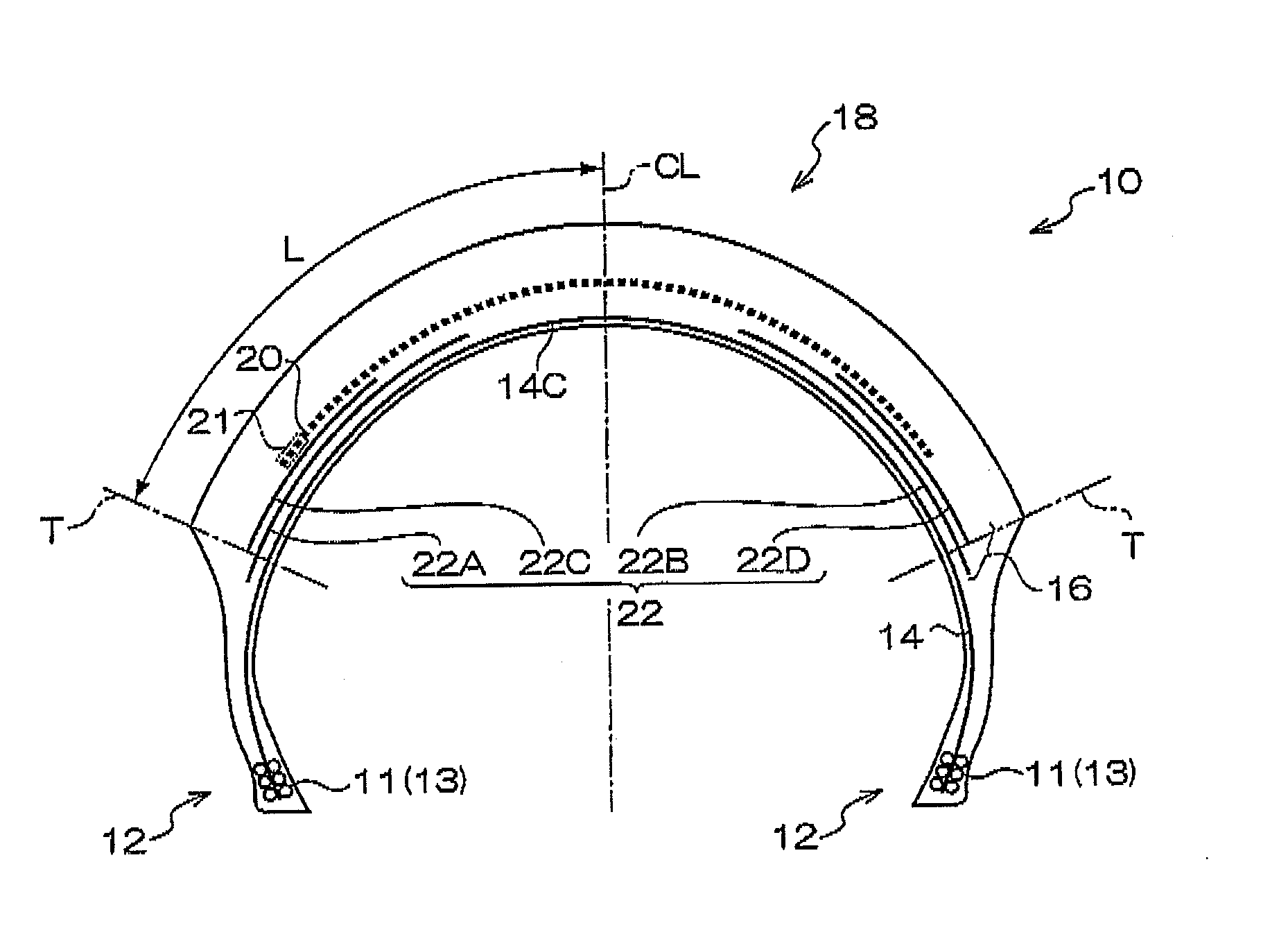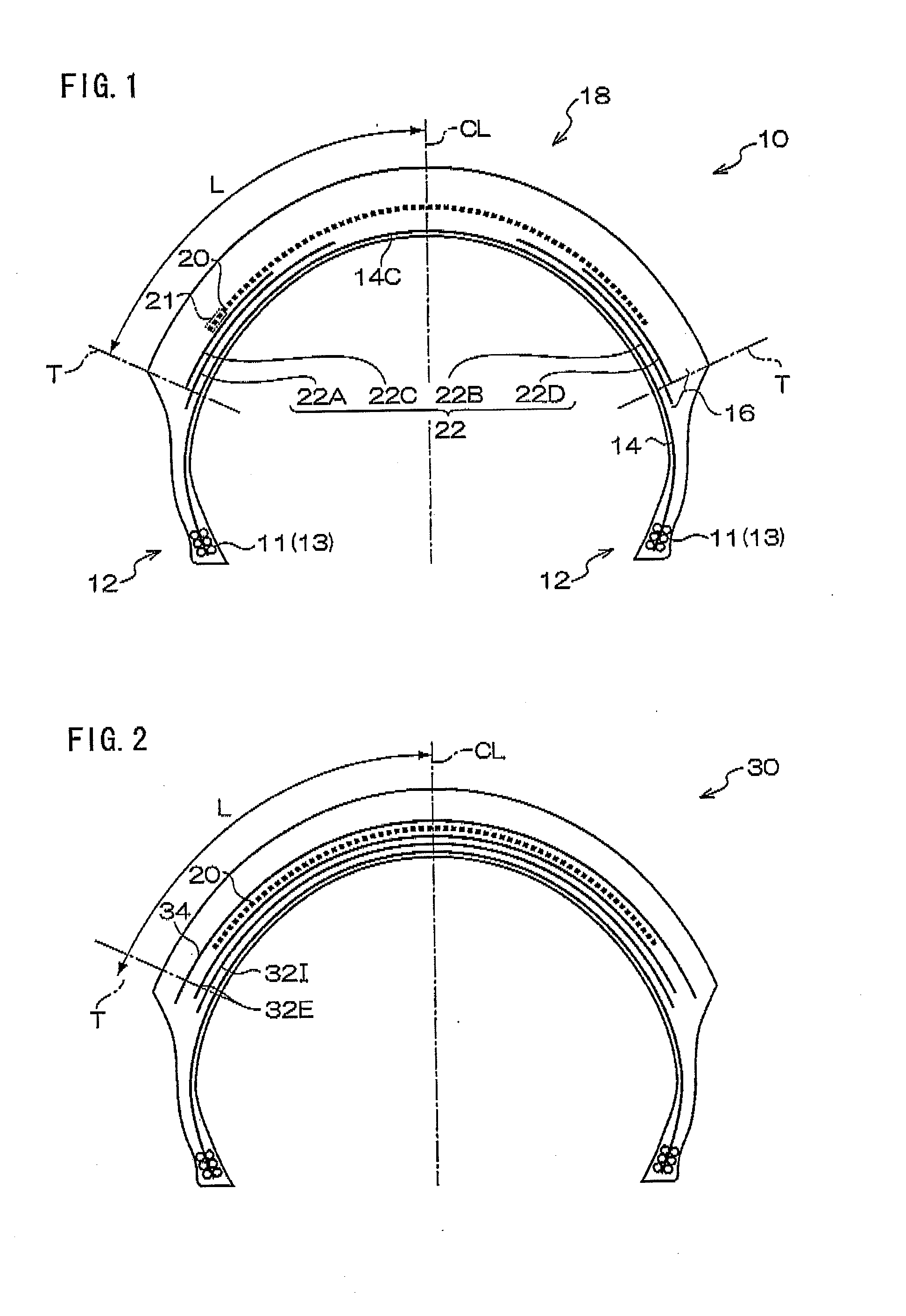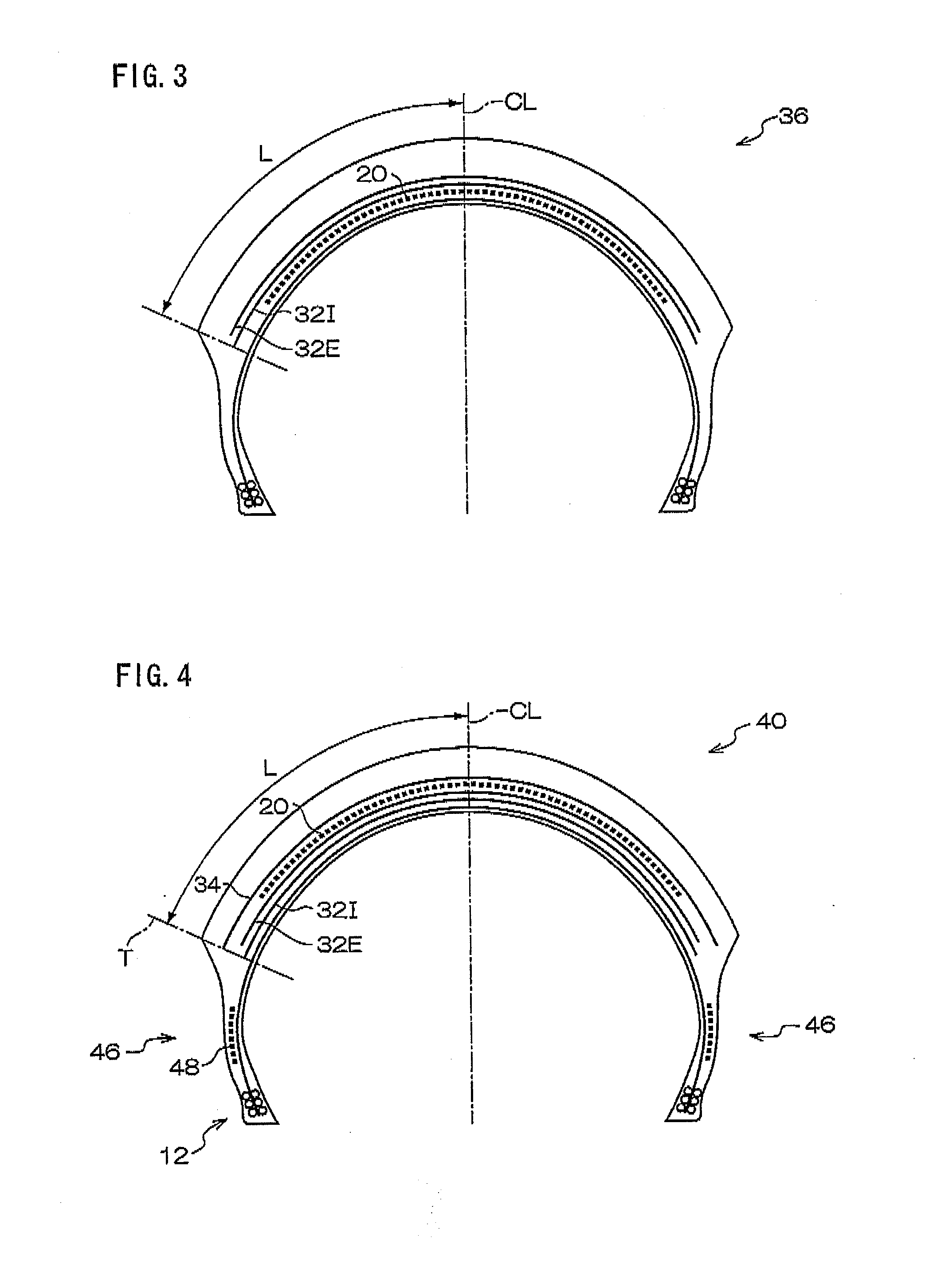Pneumatic tire for two-wheeled vehicle
a two-wheeled vehicle and pneumatic technology, applied in the direction of tyre beads, bicycles, transportation and packaging, etc., can solve the problems of unfavorable driving stability and dramatic improvement of driving stability, and achieve the effect of reducing the rigidity of the belt in the plane, reducing the amount of belt force when turning, and reducing the force of the grip
- Summary
- Abstract
- Description
- Claims
- Application Information
AI Technical Summary
Benefits of technology
Problems solved by technology
Method used
Image
Examples
example 1
[0058]Example 1 is a pneumatic tire for a two-wheeled vehicle having the structure shown in FIG. 1. Spiral belt layer 20 is 180 mm wide (the width of one side thereof from the tire equatorial plane being 90 mm), which is 0.75 times the entire width of the tread 2 L. Spiral belt layer 20 is formed by spirally winding steel cords plied from 1×3 steel monofilaments each having a diameter of 0.18 mm, with 60 cords laid per 50 mm.
[0059]At an inner side of spiral belt layer 20 are two pairs of left and right symmetrical intersecting belts 22A-22D (intersecting belts 22A and 22C are one pair, and intersecting belts 22B and 22D are another pair). First intersecting belts 22A and 22B are each 80 nm wide, and tire width direction outer ends thereof extend 5 mm from tread end T toward a tire outer side. Second intersecting belts 22C and 22D are each 50 mm wide, and tire width direction outer ends thereof are at the same position as tread edge T. The first intersecting belts and the second inte...
example 2
[0061]Example 2 has a configuration in which one reinforcement belt (the same as reinforcement belt 34 described in Example 3 below) is added at a radial direction outer side of spiral belt layer 20 of Example 1 (see FIG. 1), at an angle of 90° relative to the tire circumferential direction. The added reinforcement belt is 240 mm wide, and is made from an aromatic polyamide. The material of the reinforcement belt is the same as that of conventional intersecting belts 82I and 82E, and the manner of laying the cords and the diameter of the cords are also the same; however, the cord angle thereof is 90°, which is different from the Conventional Example.
example 3
[0062]Example 3 is a pneumatic tire 30 for a two-wheeled vehicle having the structure shown in FIG. 2.
[0063]Example 3 includes the above spiral belt layer 20 and intersecting belts 32I and 32E similar to the Conventional Example. That is, first intersecting belt 32I is 240 mm wide, second intersecting belt 32E is 230 mm wide, and each has a cord angle of 65° relative to a tire circumferential direction. Similar to the other examples, the width of spiral belt layer 20 is 180 mm, which is different from spiral belt layer 80 of the Conventional Example. At a radial direction outer side of spiral belt layer 20 is a reinforcement belt 34 having a cord angle of 90°, similar to Example 2. Reinforcement belt 34 is 240 mm wide, the same as in Example 2. The cords of reinforcement belt 34 are made of Kevlar.
PUM
 Login to View More
Login to View More Abstract
Description
Claims
Application Information
 Login to View More
Login to View More - R&D
- Intellectual Property
- Life Sciences
- Materials
- Tech Scout
- Unparalleled Data Quality
- Higher Quality Content
- 60% Fewer Hallucinations
Browse by: Latest US Patents, China's latest patents, Technical Efficacy Thesaurus, Application Domain, Technology Topic, Popular Technical Reports.
© 2025 PatSnap. All rights reserved.Legal|Privacy policy|Modern Slavery Act Transparency Statement|Sitemap|About US| Contact US: help@patsnap.com



